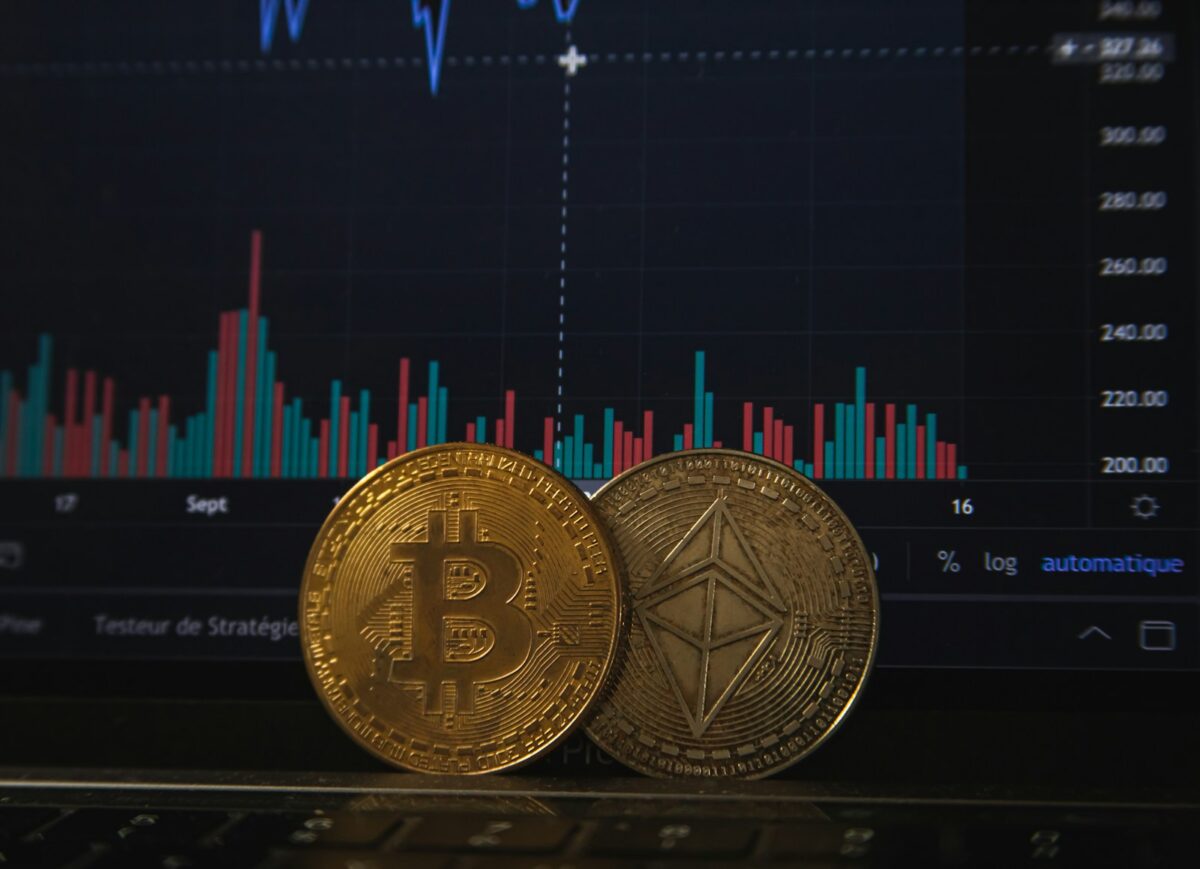
Blockchain carbon credits

Implementing decentralized ledgers enhances transparency and traceability in the exchange of emission reduction certificates. This approach addresses common challenges in verifying the authenticity of offset units, ensuring that every transaction is recorded immutably. Such clarity empowers stakeholders to confidently engage in sustainability initiatives without concerns over double counting or fraudulent claims.
Utilizing tokenized environmental assets facilitates real-time trading and settlement, accelerating climate action on a global scale. By digitizing permits that represent quantified greenhouse gas mitigation efforts, markets become more accessible and liquid. Participants can monitor performance metrics continuously, enabling adaptive management of portfolios aligned with carbon neutrality targets.
The integration of smart contracts automates compliance verification and enforces predefined criteria for asset issuance and retirement. This mechanization reduces administrative overhead while maintaining rigorous standards essential for credible offsetting schemes. Consequently, it promotes accountability across industries striving to reduce their ecological footprint through verified mechanisms supporting long-term sustainability goals.
Understanding Distributed Ledger Solutions for Environmental Offset Instruments
The application of distributed ledger technology (DLT) in environmental offset instruments enhances transparency and traceability throughout the lifecycle of emission reduction units. By encoding data related to issuance, ownership transfer, and retirement of these units on an immutable ledger, stakeholders can verify authenticity and prevent double counting. This approach addresses long-standing issues in the voluntary and compliance markets where trust deficits often hinder effective climate action.
Integration of tokenized environmental asset registries enables seamless peer-to-peer trading, reducing intermediaries while increasing market liquidity. Projects that generate these tradable certificates–ranging from reforestation to renewable energy installations–benefit from automated verification processes using IoT sensors and satellite data feeds. Such real-time monitoring strengthens the credibility of sustainability claims by providing continuous proof of impact.
Technical Foundations and Market Dynamics
Distributed ledgers operate through consensus algorithms such as Proof of Stake or Byzantine Fault Tolerance, ensuring data integrity without reliance on centralized authorities. Each recorded transaction includes cryptographic signatures and timestamps, creating an auditable chain from initial project validation to final retirement of a unit. These mechanisms facilitate regulatory compliance by enabling authorities to perform independent audits efficiently.
Market participants leverage smart contracts to automate settlement processes based on predefined conditions. For example, when a company purchases offset tokens representing a specific tonnage of reduced emissions, payments execute instantaneously upon confirmation of delivery. This reduces counterparty risk and accelerates transaction cycles in carbon trading platforms globally.
Case studies reveal that incorporating DLT enhances participation from smaller-scale projects in developing regions by lowering entry barriers through fractional ownership models. Platforms employing these technologies report improved stakeholder engagement due to transparent reporting dashboards accessible by investors, regulators, and local communities alike.
Ongoing experimental deployments focus on integrating machine learning algorithms with environmental databases to predict future supply-demand imbalances within offset markets. Such predictive analytics could optimize pricing models, incentivize additional mitigation initiatives, and ultimately contribute more effectively toward international climate targets.
Tracking Carbon Credit Ownership
Accurate tracking of environmental offset units is essential for ensuring integrity in sustainability initiatives and minimizing risks related to double spending or fraudulent claims. Distributed ledgers provide a robust mechanism for real-time verification of asset provenance, allowing stakeholders to trace ownership history transparently and immutably. This capability strengthens trust in trading platforms by enabling auditors and regulators to confirm that each unit corresponds to a verified emission reduction or sequestration event.
Verification protocols integrated within decentralized registries combine automated data feeds with independent third-party assessments, creating a multi-layered validation framework. Such frameworks enhance accountability by recording every transaction and transfer of ownership permanently, thereby facilitating seamless audits over the lifecycle of each offset instrument. Furthermore, this approach supports climate action by incentivizing companies to retire their purchased units only after confirmed environmental impact.
Mechanisms Supporting Ownership Transparency
One key technical feature underpinning reliable tracking is tokenization of offset assets, which converts physical or contractual rights into unique digital representations. Each token carries metadata detailing origin, vintage year, project type, and certification body, all cryptographically secured against tampering. Through smart contracts, these tokens automate compliance checks during transfers, preventing unauthorized duplication or resale.
The integration of Internet-of-Things (IoT) sensors in monitoring projects–such as reforestation sites or methane capture facilities–feeds validated data directly into the registry. This continuous inflow enables dynamic updating of asset status reflecting actual emissions reductions achieved versus projected baselines. Consequently, trading participants gain enhanced visibility into the performance and authenticity of their holdings before engaging in market transactions.
Case studies from existing platforms illustrate how transparent registries reduce information asymmetry among buyers and sellers. For example:
- A forestry conservation initiative in South America employed satellite imagery linked with registry entries to confirm acreage preserved without manual intervention.
- An industrial gas destruction program utilized IoT devices reporting real-time emission levels calibrated against standardized measurement protocols, improving confidence in generated offsets.
The convergence of these technologies fosters an ecosystem where all participants can verify ownership claims independently while advancing broader climate goals through reliable offset accounting. As regulatory frameworks evolve globally to recognize digitally tracked instruments as legitimate tools for meeting emission targets, understanding these mechanisms becomes critical for entities seeking meaningful environmental impact via sustainability investments.
Verifying Emission Reductions
Verification of emission reductions requires precise, transparent methodologies to ensure that each environmental action results in genuine and measurable decreases in greenhouse gas output. Independent third-party verification agencies utilize remote sensing data, on-site inspections, and continuous monitoring technologies to validate the authenticity of reported reductions. For example, satellite imagery combined with IoT sensors can track reforestation projects or industrial process improvements in real time, providing immutable proof of atmospheric impact. This multi-layered approach mitigates risks of double counting and fraudulent claims within trading systems aimed at offsetting environmental footprints.
Transparency plays a pivotal role in sustaining trust throughout the lifecycle of sustainability initiatives. Distributed ledgers enable open access to transaction histories and audit trails while ensuring data integrity through cryptographic methods. By recording every offset issuance, transfer, and retirement on an accessible platform, stakeholders can conduct independent evaluations without reliance on centralized authorities. A case study from a Southeast Asian renewable energy project demonstrated that transparent registries increased investor confidence by 40%, accelerating climate-positive investments and expanding market liquidity for tradable emission reductions.
Technical Approaches to Verification
Verification protocols often integrate standardized metrics such as Verified Emission Reduction (VER) or Certified Emission Reduction (CER) units aligned with international frameworks like the Clean Development Mechanism (CDM). Quantitative assessments involve rigorous baseline determination–measuring emissions prior to intervention–and subsequent monitoring periods to calculate net gains against this reference. Advanced algorithms analyze sensor data streams to detect anomalies or deviations from expected performance curves, enhancing accuracy over manual reporting methods. For instance:
- Remote sensing: Satellite-based spectral analysis quantifies vegetation density changes affecting carbon sequestration.
- Automated monitoring: Industrial plants deploy continuous emissions measurement systems (CEMS) linked directly to registries.
- Data reconciliation: Cross-verification between independent data sources reduces uncertainties in reported savings.
The integration of automated verification tools facilitates scalable oversight across diverse project types while maintaining stringent compliance criteria necessary for credible climate action.
The Role of Trading Platforms in Verification
Trading infrastructures designed for exchange of emission offsets incorporate built-in verification checkpoints that enforce authenticity before transactions finalize. Smart contracts automatically validate metadata associated with each offset token–such as issuance date, project origin, and verified quantity–prior to permitting trade execution. This reduces counterparty risk and enhances market confidence by preventing circulation of invalid instruments. In pilot programs across European markets, these mechanisms decreased settlement times by 30% and lowered verification-related disputes significantly.
Moreover, integrating real-time environmental monitoring data feeds into trading platforms creates dynamic pricing models reflecting actual performance rather than estimated projections. Such feedback loops encourage proactive project management and continuous improvement towards sustainability targets. Consequently, investors receive more accurate signals about the value and reliability of emission reduction assets they acquire or retire within global climate mitigation efforts.
Integrating Blockchain With Registries
To enhance verification mechanisms within environmental registries, integrating distributed ledger technology offers a robust solution. By creating immutable records of emission reductions and associated offset instruments, the system improves reliability in tracking climate action outcomes. This integration enables near real-time synchronization between registries and trading platforms, reducing discrepancies and accelerating reconciliation processes.
Transparent record-keeping facilitates trust among stakeholders by providing an auditable trail of transactions related to mitigation efforts. For instance, tokenizing emission reduction units allows for clear provenance and prevents double counting or fraudulent claims. Such transparency is essential for regulatory compliance and market confidence when exchanging these tradable instruments.
Technical Implementation and Verification Processes
Incorporating distributed ledger protocols into existing registry infrastructures requires careful alignment with established standards such as ISO 14064 or the Verified Carbon Standard (VCS). Smart contracts automate verification workflows by executing predefined conditions when environmental data meets specific thresholds. For example:
- Data from satellite monitoring or IoT sensors are uploaded onto the platform;
- The smart contract cross-references this input with baseline emission levels;
- If criteria are satisfied, new offset tokens are issued directly to the project owner’s wallet.
This approach minimizes human error in certification while expediting issuance timelines.
A comparative case study of an Australian reforestation initiative showed that blockchain-enabled verification reduced audit costs by 30% and cut issuance time from six months to under four weeks. Moreover, transparent audit trails allowed third-party verifiers to conduct remote assessments with greater accuracy.
An additional benefit includes improved stakeholder engagement through accessible dashboards where participants can monitor credit lifecycles and trading activity. This democratization encourages proactive climate-positive decisions by increasing awareness of environmental asset flows.
Future research should focus on interoperability frameworks enabling seamless interaction between various national and international registries. Ensuring standardized data formats and consensus algorithms will be critical for expanding decentralized verification beyond pilot projects into global carbon markets. The progressive integration of ledger-based technologies holds promise for transforming how mitigation commitments are tracked, verified, and traded worldwide.
Reducing Fraud In Carbon Markets
Implementing robust verification protocols integrated with transparent ledger systems significantly diminishes fraudulent activities in emission offset trading. By enabling immutable records of environmental actions and real-time audit trails, the integrity of climate-related asset exchanges strengthens, ensuring each unit corresponds to verifiable impact.
Future developments should prioritize interoperable frameworks that standardize data input from diverse environmental projects, enhancing cross-platform trust and efficiency. Smart contract automation can enforce conditional issuance and retirement of offset tokens only after multi-layered verification, curbing double-spending and artificial inflation of available units.
Key Technical Insights and Future Directions
- Multi-source Verification: Combining satellite imagery, IoT sensor networks, and third-party audits creates a multi-dimensional validation approach that reduces reliance on manual reporting.
- Transparent Ledger Architecture: Distributed registries provide open-access historical data on offset generation and trading volume, facilitating anomaly detection through machine learning analytics.
- Automated Compliance Enforcement: Smart contracts can trigger automatic suspension or flagging of suspicious transactions, ensuring adherence to regulatory thresholds without human delay.
- Interoperability Standards: Adoption of common metadata schemas and APIs across platforms enables seamless integration between registries, marketplaces, and certification bodies.
The broader environmental implications include increased confidence among stakeholders in climate action markets, attracting more capital into genuine sustainability projects. As transparency improves, the risk-adjusted valuation of emission reduction units aligns more closely with actual ecological benefits rather than speculative trading dynamics.
Ongoing research must focus on refining cryptographic proof-of-impact techniques and incentivizing community-driven validation models. Such innovations will deepen market resilience against manipulation while empowering localized environmental initiatives through verified participation in global trading ecosystems.


